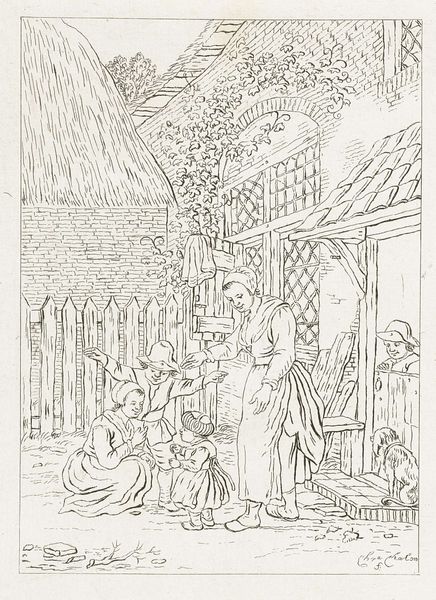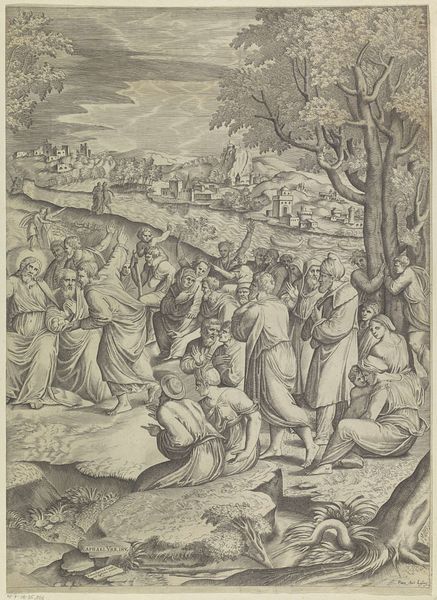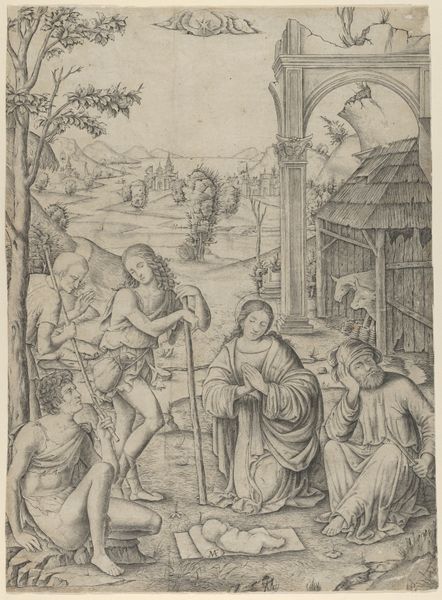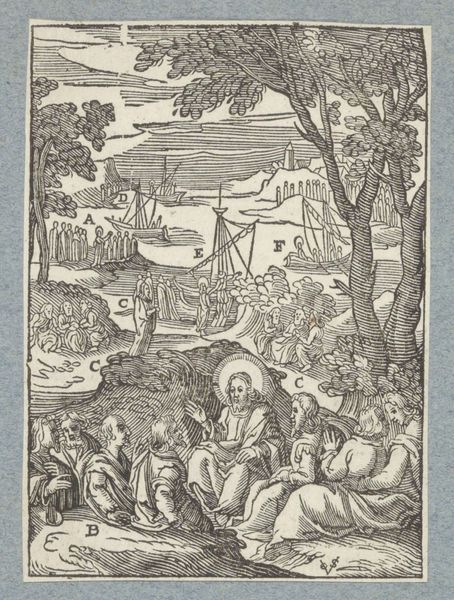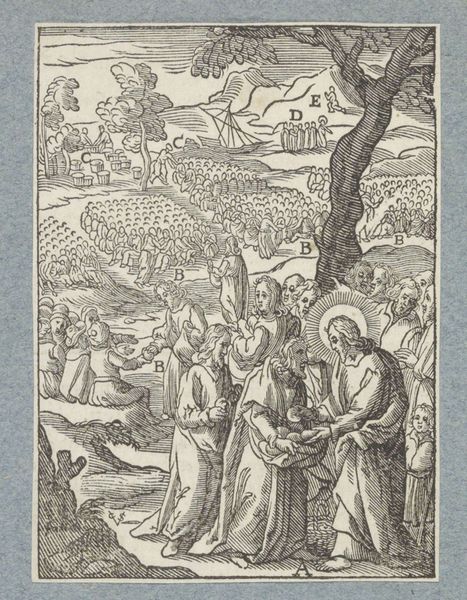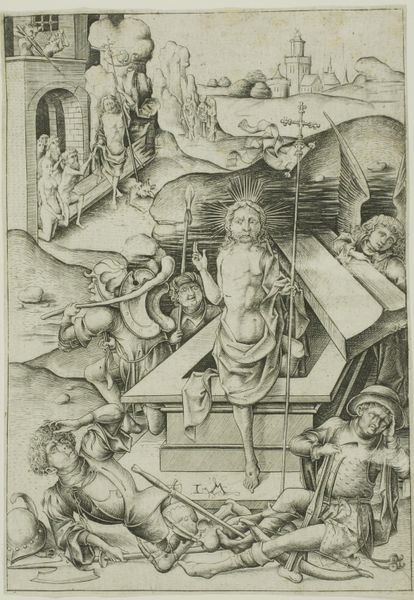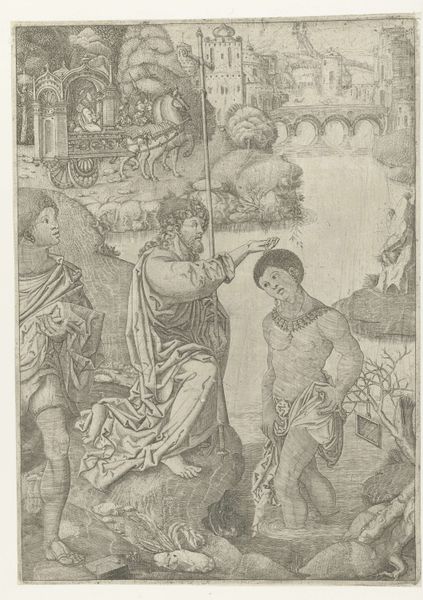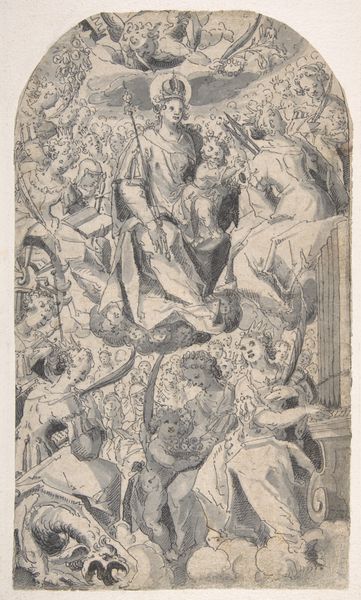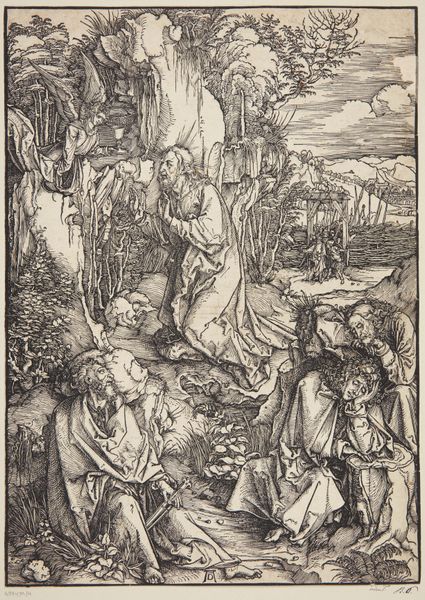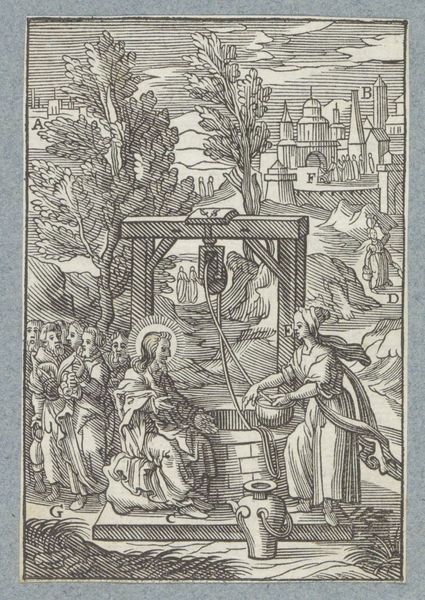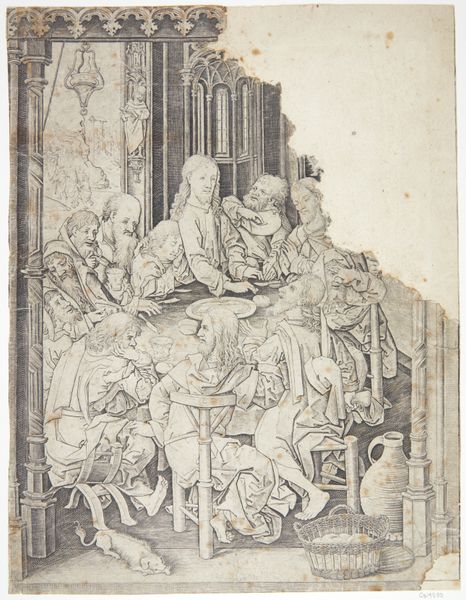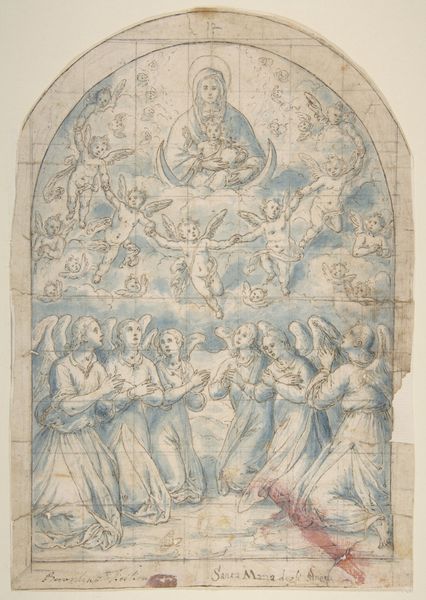
painting, ceramic, fresco
#
allegory
#
narrative-art
#
painting
#
ceramic
#
perspective
#
figuration
#
fresco
#
11_renaissance
#
history-painting
#
decorative-art
#
italian-renaissance
Dimensions: overall: 22.2 x 16.8 cm (8 3/4 x 6 5/8 in.) overall (thickness): 1.5 cm (9/16 in.)
Copyright: National Gallery of Art: CC0 1.0
Curator: Looking at this piece, I immediately notice its vibrant use of color and the almost theatrical staging of the scene. Editor: Indeed, the intensity of the colors is quite striking. We are looking at a ceramic panel made around 1525 by Nicola da Urbino depicting the Adoration of the Magi. The glossy surface and saturated palette create an almost otherworldly feel. Curator: Right, and consider how the composition itself pulls from various traditions. There’s a clear interest in linear perspective, but the density of figures and details also nods to earlier styles. It’s very much a product of its time, navigating a complex transition in artistic sensibilities. The piece would've functioned primarily as decorative object; how it projects Renaissance ideals in everyday life and social identity fascinates me. Editor: I'm especially drawn to the figures of the Magi themselves. They represent not just the arrival of wealth and status, but the broader concept of pilgrimage and recognition of divinity. Each figure, from the kneeling elder to the standing king, has a specific set of attributes, carrying layers of symbolic weight. They’re a testament to a visual language rooted in biblical texts and traditions of gift-giving to mark new beginnings. Curator: That's an important point; what's interesting, from a cultural perspective, is how such symbols reinforced certain power structures. The representation of wealth, the exotic clothes, even the way perspective is employed all contribute to a carefully constructed hierarchy. These panels circulated among elite circles, carrying specific ideological baggage. Editor: And how those elements reinforce the story of the nativity, imbuing it with authority! Notice how all figures and gazes converge on Mary and Jesus at the panel's edge. It highlights an ideal mother-child relationship, suggesting hope. Despite their valuable gifts, the true gift is belief in the holy scene. Curator: Precisely, the panel provides an opportunity to experience the Bible. To your point: I am struck by its message through the way power dynamics are coded and negotiated through symbolic representation. The image naturalizes, in a sense, certain hierarchical configurations. Editor: Considering the work this way reveals its complexity. What seems like a charming devotional piece operates on many levels. Curator: Right, art provides a window into the cultural norms of its era, which, when viewed through a critical lens, exposes interesting nuances of the politics of the day.
Comments
No comments
Be the first to comment and join the conversation on the ultimate creative platform.
